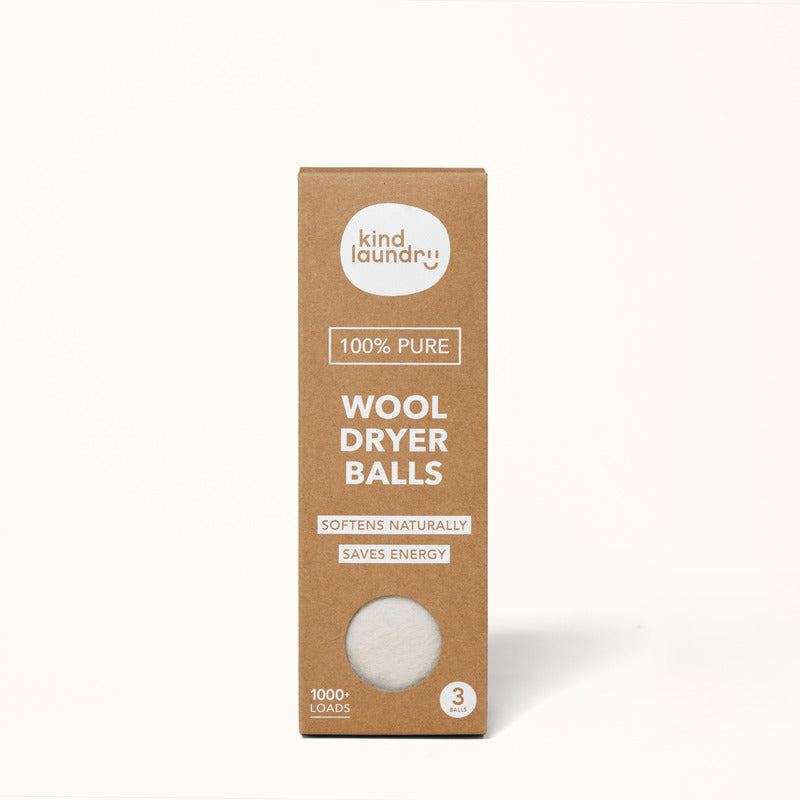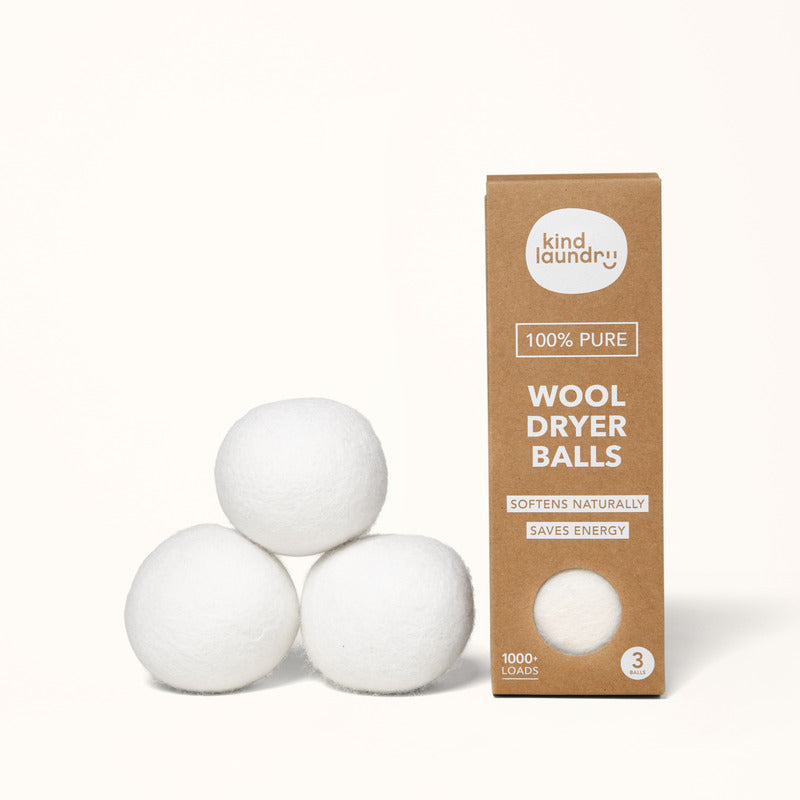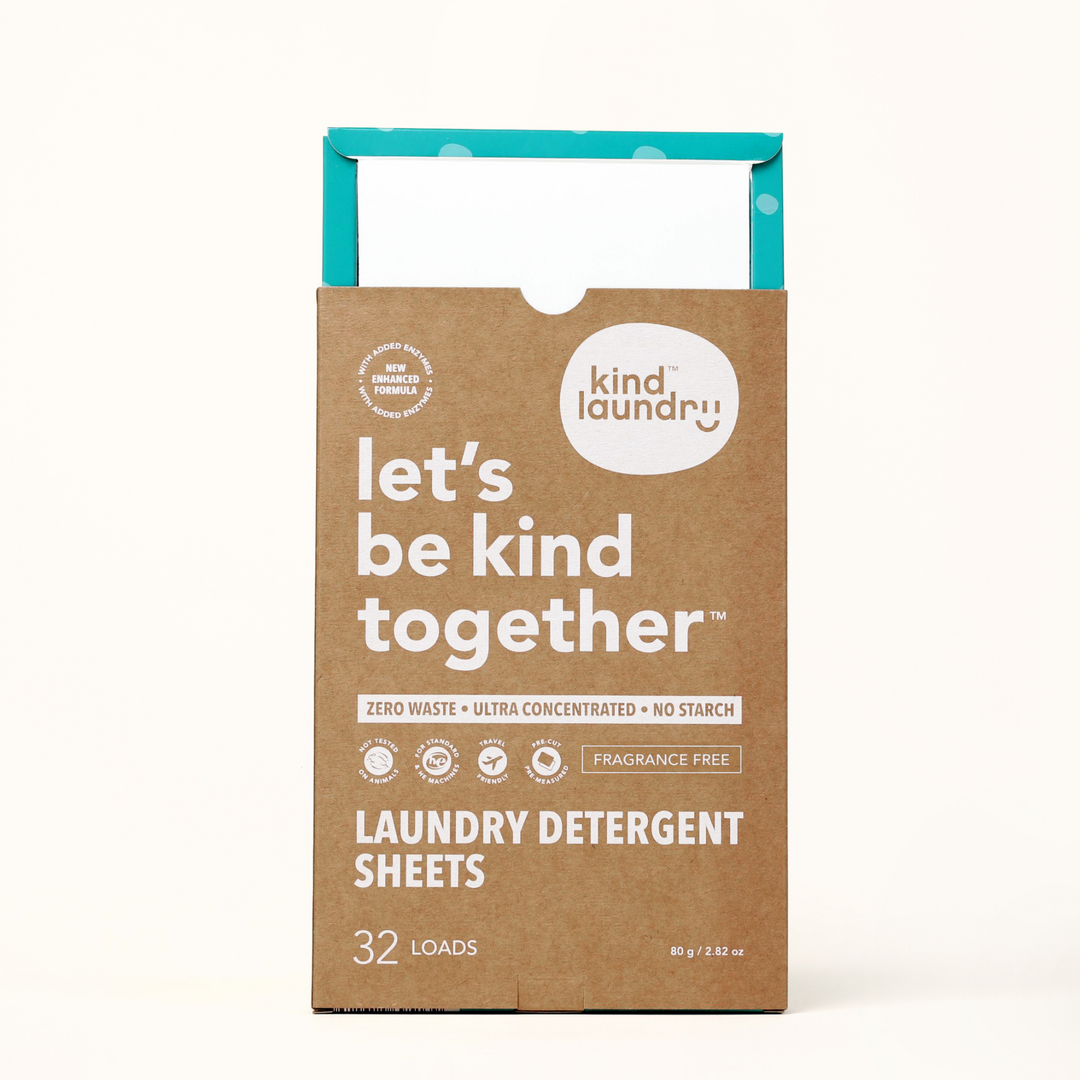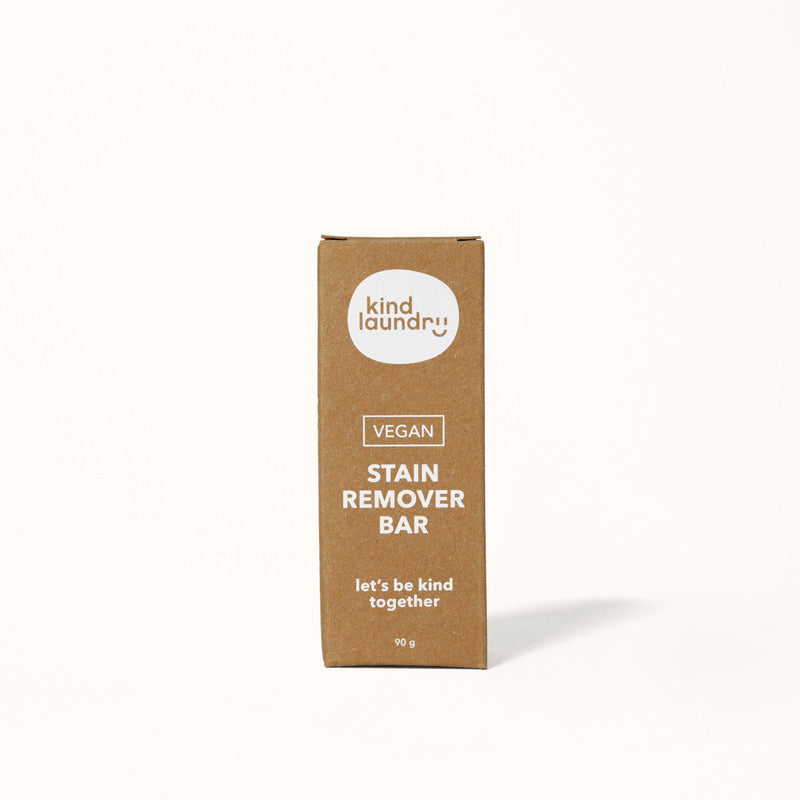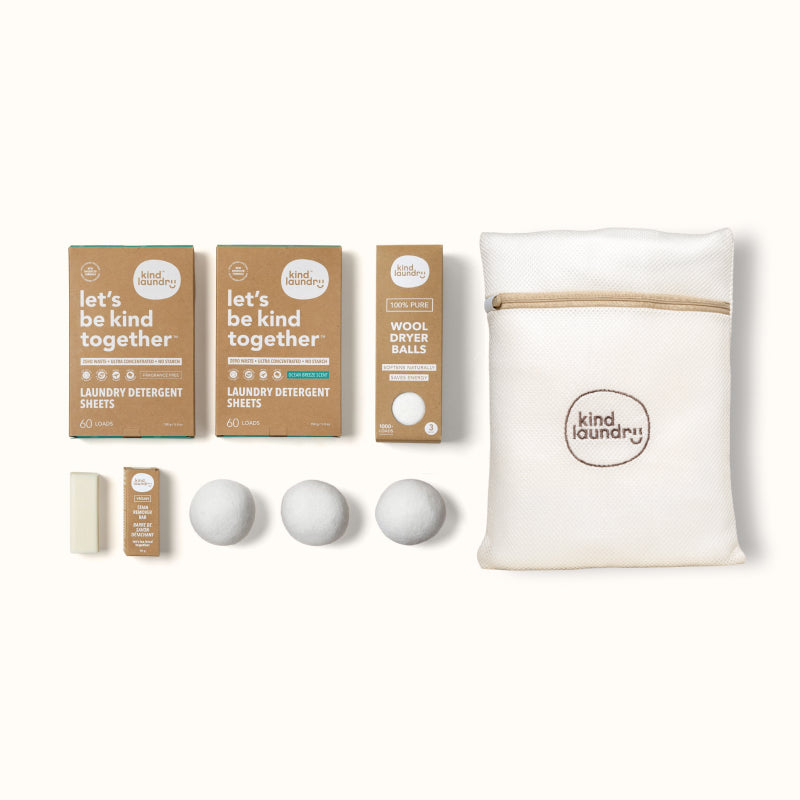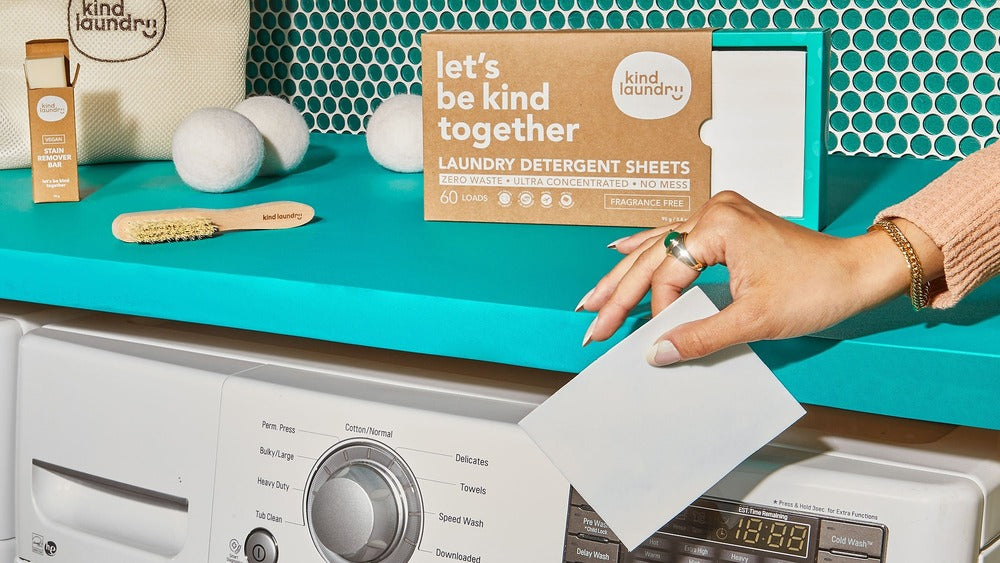Laundry - there’s no avoiding it. Unless you’re living the good life off the grid, you’re likely separating your whites and colors like the rest of us. Maybe you're also pondering how those seven loads of laundry per week on average are impacting our collective earth.
If we’ve learned nothing else about our earth's impact, it is that small habits add up - some for the better and some for the worse. Our daily repetitive routines are one of the best places to start in reimaging a greener way of living.
Take the 660,000,000 loads of laundry the Americans do each week. That’s an equivalent amount of small changes that can be made to lessen the impact of, well, having a clean work shirt on Monday.
Environmental Impacts of Doing The Laundry
The modern world runs on clean clothes. Every week, an estimated 840 million washing machines keep the planet spotless by spinning billions of garments and textiles in homes and businesses. Since they were first introduced to households in the 1950s, these appliances have become a staple for two billion people worldwide.
Our laundry cycles leave a diverse carbon footprint from the electricity they pull from the grid and the water utilized down to the smaller details like what kind of cleaning agents are used. Let’s take a look at the impact of our laundry routine.
Carbon Emissions
While we may think our daily commute over our laundry routine when considering carbon emissions, the truth is that the release of greenhouse gasses like CO2 is the result of any activity that requires fossil fuel-generated energy.
In this respect, our washing machines are responsible for an estimated 179 million tonnes of CO2 greenhouse gases each year. To put this in perspective, that equates to the energy usage and emissions of 21 million homes.
Water Use
The good news is that today’s washers are optimized to use ⅔ the amount of water than they did forty years ago, going from 40 gallons per cycle to 13 gallons, with burgeoning federal standards. However, washing machines are still pulling around 19 billion cubic meters of water annually from our natural resources.
Like carbon emissions, we'll explore a few changes in laundry habits below that we can take into our hands to decrease our water footprint when it comes to the laundry basket.
Chemical Pollutants
In a world of wellness, many people are careful about what they put into their bodies but put less thought into what they are putting into Mother Earth.
Unfortunately, many laundry products, from detergents to dryer sheets, contain potentially hazardous chemicals for our waterways and soil and also emit volatile organic compounds (VOCs).
Regarding the latter, the EPA has identified more than 25 VOCs that are commonly emitted from residential dryer vents, with 7 classified as hazardous air pollutants (HAPs) and two as potential carcinogens.
Packaging

The 20th century brought many consumer conveniences, but potentially none was more addictive in its durability, lightweight nature, and low cost than plastic packaging.
While mankind has generally acknowledged over the past ten years that our addiction is causing a huge problem with our relationship with mother earth, we still have a ways to go in understanding how our daily purchases affect the planet.
Thankfully, more and more zero-waste options are becoming available, allowing us to break our plastic habit without sacrificing quality, like wool dryer balls that replace multitudes of synthetic materials and plastic packaging.
Microplastics
A study conducted by the University of Plymouth found that more than 700,000 microscopic fibers from the wear of textiles in washing can be released into wastewater during each use of a domestic washing machine.
Many of these fibers are microplastics that will pass through sewage treatment and into the environment polluting soil, waterways, and even our food system.
Our Top 15 Eco-Friendly Laundry Tips
Keeping your family healthy and the environment clean doesn't have to be a chore.
Simple switches in your laundry routine can create sizeable savings, lower energy consumption, minimize exposure to chemicals, and help preserve water sources - all without breaking the bank or devising an elaborate system of hand-washing!
Here are 15 eco-friendly laundry tips that won’t stain the environment.
Only Run Full Loads
We know that feeling when you have a big weekend coming up and can’t live without a particular sweater that has been left smelling like a bonfire after a camping trip, but we behoove you to wait! Not wait to wash the sweater, but wait until you have a full load to wash it with!
Does it really deserve a private 13-gallon spa wash, or can it wait for like-minded materials to join it? Besides saving money, water, and energy, washing machines that are at least ¾ full do a more efficient job.
Use a High-Speed Spin
Like a ballerina, washing machines do best when they’re spinning at high speed to ensure that most moisture has been removed. This will save your dryer from working overtime, which can reduce the 1.8kg of CO2 produced from each dry tumble session.
Air Dry Your Clothes
While this is highly climate dependent, consider skipping the dryer altogether. We know that for some of us, that could mean several days of air drying on a rack in the laundry room, while for others, this means a breezy trip to the backyard, where laundry may be dry in just a few hours.
However, at 1.8kg of CO2 emissions per load and an average of 364 loads of laundry a year, you could shave 655 kg of greenhouse gasses off your carbon footprint. So even if it's just during warmer weather seasons, air dying your clothes is a small measure that will add up for the earth.
Mind the Water Temperature
One of the first eco-friendly laundry tips we learned from the elder statesmen of laundry who came before us was that you always wash colors on cold and whites on hot. Breaking this rule meant the laundry police would be on your doorstep shaking their fingers at still-stained whites and dull-looking colors.
The truth is washing clothes at 25°C on a 30 thirty minute cycle has proven to be perfectly effective while reducing the energy it takes to heat water and significantly minimizing the shedding of microfibres from hot water abrasion.
In addition, more delicate fabrics like lace and silk and colorful fabrics do better in cold water wash cycles. Using cold water also helps to minimize the shrink, fade, and wrinkle of certain fabrics.
Use Green Laundry Detergent

When it comes to sustainable and eco-friendly laundry tips, eco-friendly washing detergents, fabric softeners, and dryer sheets are a great way to reduce your impact on the earth.
Products like naturally dissolving laundry detergent sheets have made great strides to eliminate bulky packaging and use safer natural ingredients.
Many green laundry formulas are made from plant-derived oils, like tea tree oil, and work just as well as their traditional counterparts but with added safety for your home and the environment.
Other formulas use biodegradable ingredients, replacing potentially harmful chemicals like bleach, phosphates, and petroleum distillates that go on to pollute our natural ecosystems.
Only Wash Clothes When Dirty
Did you know, about 60% of the energy used by any item of clothing happens after it is purchased? And that impact can be predominantly found in the laundry room, where it’s washed, worn, and washed again - sometimes without needing to be.
Don’t be afraid to join the 37% of people who only wash their jeans after the third wear. As a matter of fact, it’s recommended! A report issued by denim giant Levi’s suggested “ washing jeans every 10 wears, instead of every two reduces energy use, climate change impact, and water intake by up to 80%. “
Whether you are a denim wearer or not, it’s better for the longevity of your wardrobe and the environment if you wait to wash until it’s necessary - your nose will likely tell you when it’s time.
Avoid Ironing
While a crisp and wrinkle-free work shirt may give an undeniably chic look, the unfortunate downside is the energy it takes to heat and maintain an iron is sucking the life out of our natural resources. With an average power consumption of 800 to 2000 watts, it taxes our energy grid unnecessarily.
Let’s make wrinkles a fashion trend! We may not have to go that far with many natural alternatives to shaking out the wrinkles that the dryer couldn’t handle.
Use the Moisture Sensor
The moisture sensor, we all know what that is, right? So being environmentally conscious will require all of us to get more personal with our laundry settings, including the moisture sensor on the dryer, which allows it to stop when clothes are dry rather than on a timed setting.
Studies have shown that using a moisture sensor on the dryer can reduce energy consumption by up to 40%. This equates to roughly 9kgs of annual CO2 emissions being prevented for each household that runs its dryer using this setting.
Not only could this help significantly reduce overall carbon emissions, but it could also save you time and money in the process.
Use Energy-Efficient Machines
Energy-efficient washers and dryers are more than just a brief trend-- they can save money and provide significant environmental benefits. Purposefully low-impact washers and dryers are becoming more accessible than ever before, thanks to federal regulations that are increasing incentives and availability of Energy Star-rated options.
The Environmental Protection Agency vetted Energy Star-rated washers and dryers are designed to produce fewer greenhouse gas emissions without sacrificing quality and effectiveness in your laundry routine.
Energy Star-rated washers, and dryers use up to 20% less energy and up to 30% less water than other machines. Additionally, these models often have higher efficiency ratings, better cleaning performance, and improved moisture management systems that reduce drying time.
Stop Using Fabric Softener
Fabric softeners are the laundry item we can live without. Commonly used in laundry products and as separate additives, fabric softeners can be incredibly harmful to both our environment and our health.
Their selling point, to make our clothing and textiles baby soft, is due in large part to “quats,” otherwise known as quaternary ammonium compounds that make our clothes feel dreamily soft right out of the wash. These compounds may achieve that goal and have been known to have adverse effects on human health and the aquatic waterways in the process.
To protect our environment, it's best for consumers to research less toxic alternatives or opt for more natural methods of softening clothes, like using a ½ cup of vinegar in the rinse cycle, Don’t worry; the smell doesn't stick around!
Avoid Chlorine Bleach
Bleach has been the swiss army knife of cleaning utility since its commercial advent at the beginning of the 20th century. However, using bleach in your laundry undoubtedly has it going into waterways, where it can combine with other substances to form dioxins which puts wildlife and surrounding ecosystems at risk.
The reactivity that bleach causes in the environment can result in a decrease in oxygen levels and an increase in toxic compounds, killing plants, fish, and other wildlife. Furthermore, chlorine-based bleaches are highly corrosive and can damage natural soil and vegetation around waterways, reducing biodiversity.
Instead, opt for non-bleach detergents with gentler pH levels and low-impact cleaning components. For a natural fix, mix lemon, peroxide, and vinegar together in a spray bottle, then leverage the power of the sun to do the rest!
Buy Better Fabrics
Using less toxic laundry supplies isn’t just safer for your household and environment; it will also give more life to your clothing, reducing another environmental impact; fast fashion.
Fast fashion refers to a growing trend of producing quantity over quality garments that result in more synthetic fabrics (which shed microplastics in the wash) and clothing with a shorter lifespan ending up in landfills.
This is such a problem that over 92 million tonnes of textiles wind up in landfills yearly. With this growing trend, the apparel industry is on track to double its carbon emissions by the end of our current decade.
Choosing better fabrics means fewer microfibres being sent into our waterways via the washing cycle and less waste going to our landfills.
Choose Less Packaging

The zero waste movement is here to stay. The EPA estimates that over 14.5 million tons of plastic containers and packaging were generated in 2018, and conscious manufacturers answered by doing less.
Convenience may seem tempting, but single-packed laundry pods and dryer sheets in plastic tubs are adding up in our landfills. Opting for a Vegan Laundry Stain Remover Bar that uses not only plant-based ingredients but also biodegradable paperboard packaging is one way choosing less will get you more!
Separate Heavy and Light Fabrics
The Department of Energy recommends drying heavy loads of blankets and towels separately from lighter-weight clothing. This eco-friendly laundry tip will reduce the dry time for lighter-weight items.
In addition, doing so prevents lighter fabrics from getting tangled up with heavier ones, such as sheets, coats, or jeans, and causes extra friction that can cause wrinkling, fading, or shrinkage in these items, requiring extra energy and water to clean them properly.
Do Regular Maintenance of Your Washer and Dryer
A washer typically has a lifespan of 10 to 14 years, and a dryer has just slightly less than 10 to 13 years. Of course, this all depends on your laundry volume.
You might be on the short end of that lifespan if you are washing your household's sporting uniforms multiple times a week and the longer end if you are living in single bliss and having a standoff with that pair of jeans you were told not to wash too often.
An efficiently running laundry setup is essential in reducing its energy and water use and corresponding carbon footprint.
Cleanings can prevent excessive accumulation of lint, which can clog the ventilation systems of both machines, reducing their efficiency. Regularly checking for these problems can also reduce the energy both appliances consume and minimize their air pollution emissions.
Performing routine inspections and cleanings of your washer and dryer is a great way to preserve the life of your appliances, save money by avoiding costly repairs, and reduce their environmental impact.
Inspections can help you identify minor issues that require simple maintenance instead of a totally new buy which sees your old washer and dryer becoming destined for the landfill.
Keep You Laundry and the Earth Stain Free
Following even a handful of these eco-friendly laundry tips can help reduce the cumulative impact of our daily household routines. Start today, start small, and just start!
Look no further than Kind Laundry for safer and more ecologically friendly alternatives to toxic and plastic-packaged laundry detergents, stain removers, and dryer sheets!
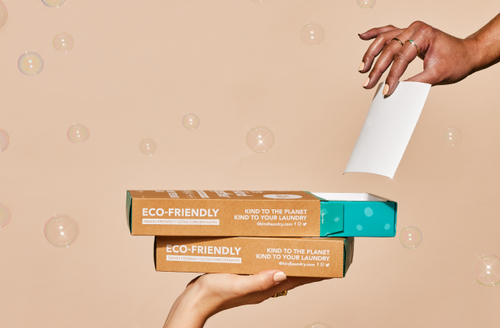
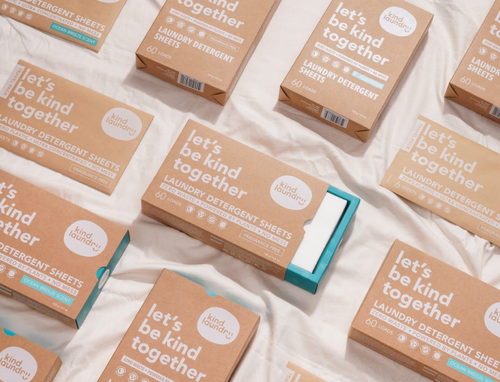


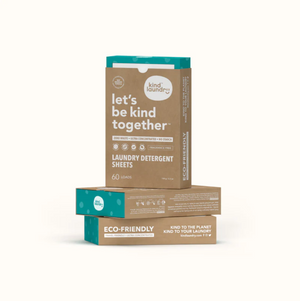








![Non-Toxic Laundry Detergent: Ultimate Guide [Tips + Best Solutions] - Kind Laundry](http://www.kindlaundry.com/cdn/shop/articles/Kind_Laundry_May_26_2023_Shot_2_1_500x.jpg?v=1702650359)
